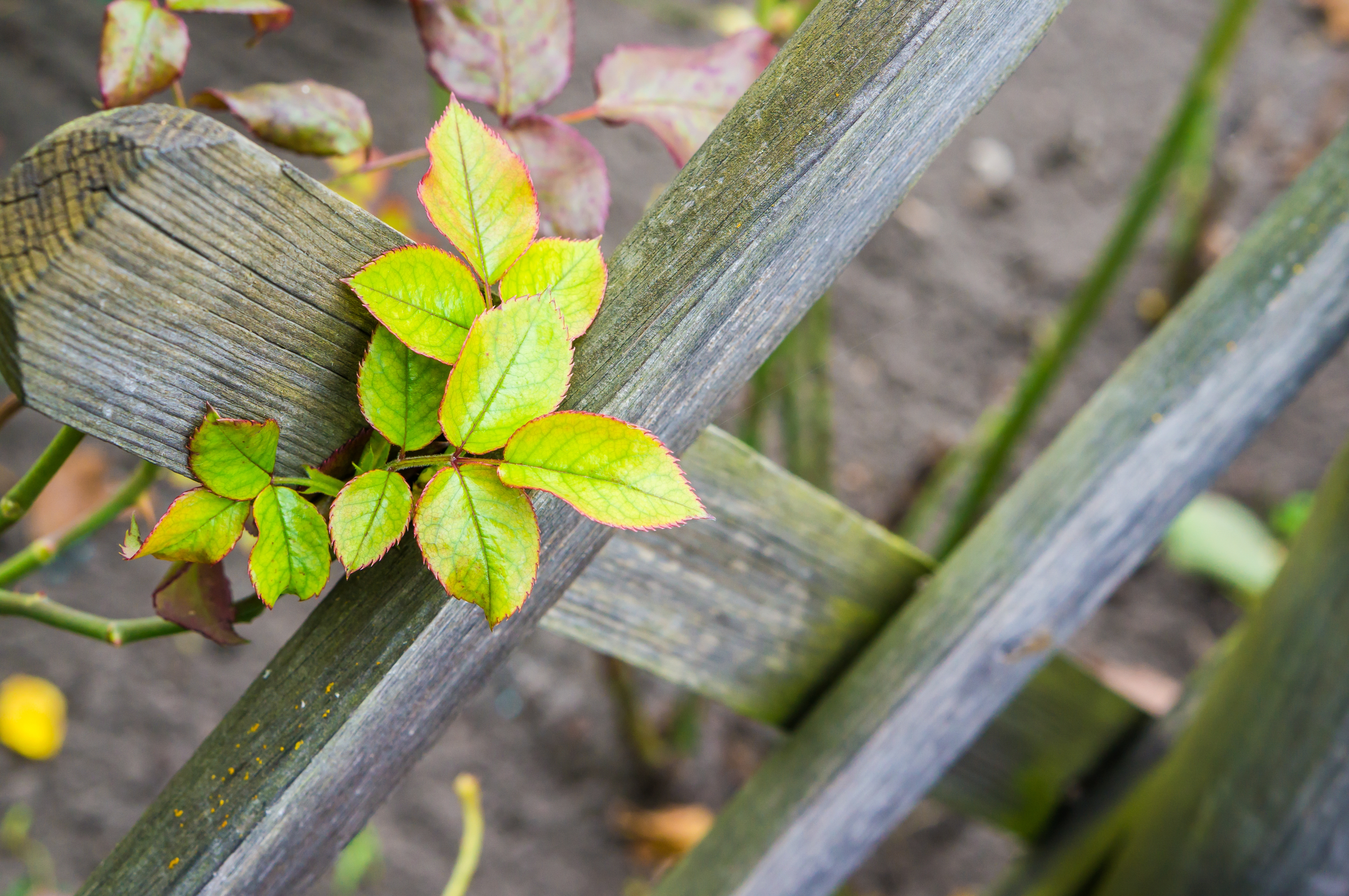Using Woody Cuttings for Plant Trellis
Many plants — beans, tomatoes, peas, and more — grow best with support. Trellises and supports can add up in cost, and it’s not always easy to find the right one. Here we’ll run through some tips and ideas for using woody plant cuttings (and plants themselves) as growing supports.
If you don’t have any trees or shrubs in your garden, consider asking a neighbour or friend. Don’t cut back any plants without permission. Additionally, bamboo garden canes can be bought from most hardware stores, and work well too.
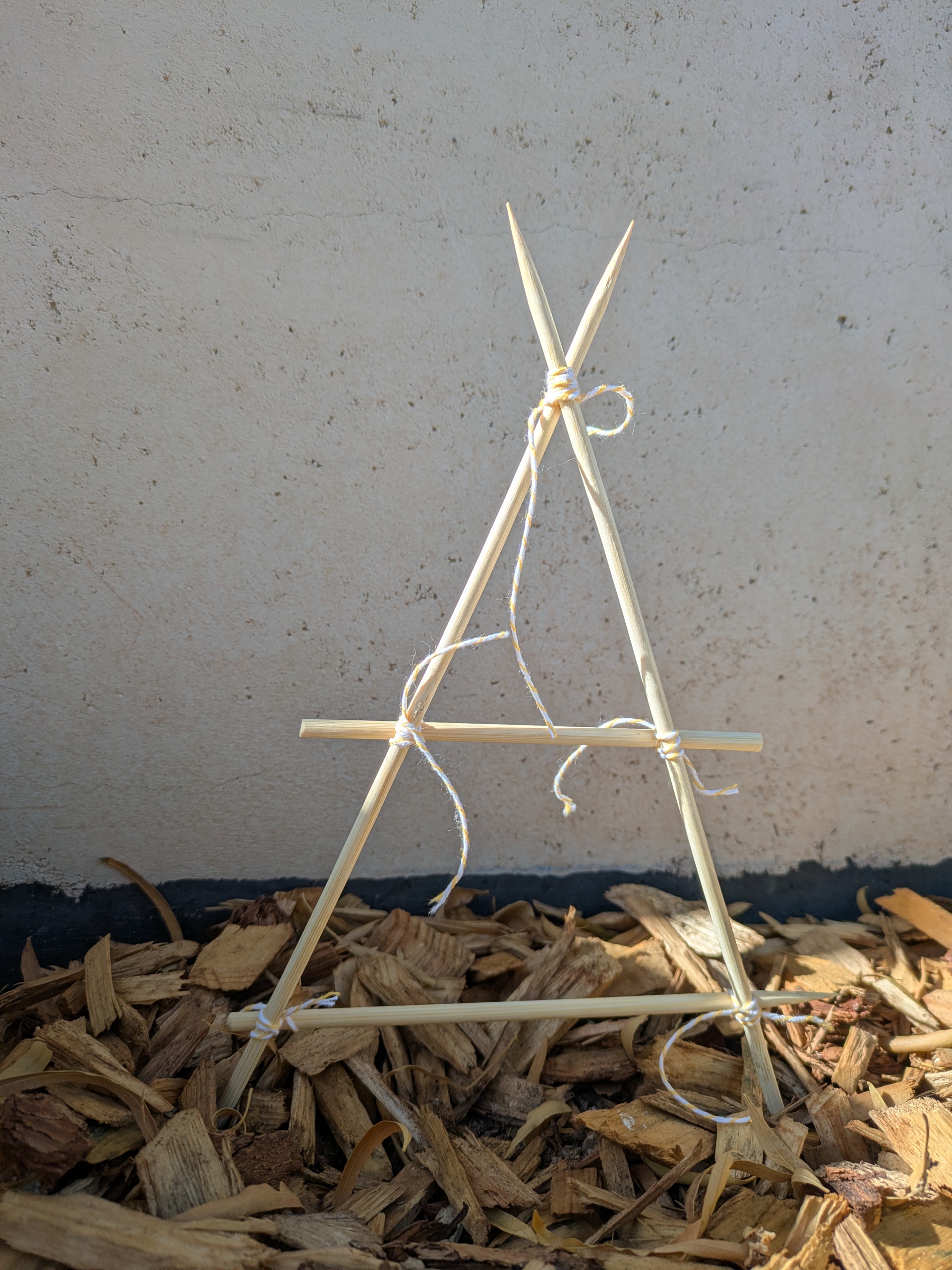
Living Trellis vs Woody Cuttings
Living trellises are a clever and space-saving way to grow more vertically. This technique is a form of companion planting, where one plant is a structural aid to another. Here are a few common and effective pairings:
- Pole beans climbing up sunflowers or corn
- Malabar spinach using cane raspberries for support
- Garden peas twining up amaranth
These pairings won’t compete, as long as the support plant is mature enough when the climber starts growing in earnest. Careful timing is key — planting schedules should be adjusted so both plants thrive.
While live plant pairings offer dynamic, seasonal support, woody cuttings provide a reusable and customizable alternative. They also offer a lot of flexibility for gardeners. Unlike live plants, they can be arranged however you like, trimmed to shape, and won’t be affected by seasonal die-back, pests, or unexpected weather.
As a rule of thumb, cuttings should be at least pencil-thick and sturdier for heavier climbers like indeterminate tomatoes or cucumbers.
As we walk through this article, we’ll dive into more specifics for each method.
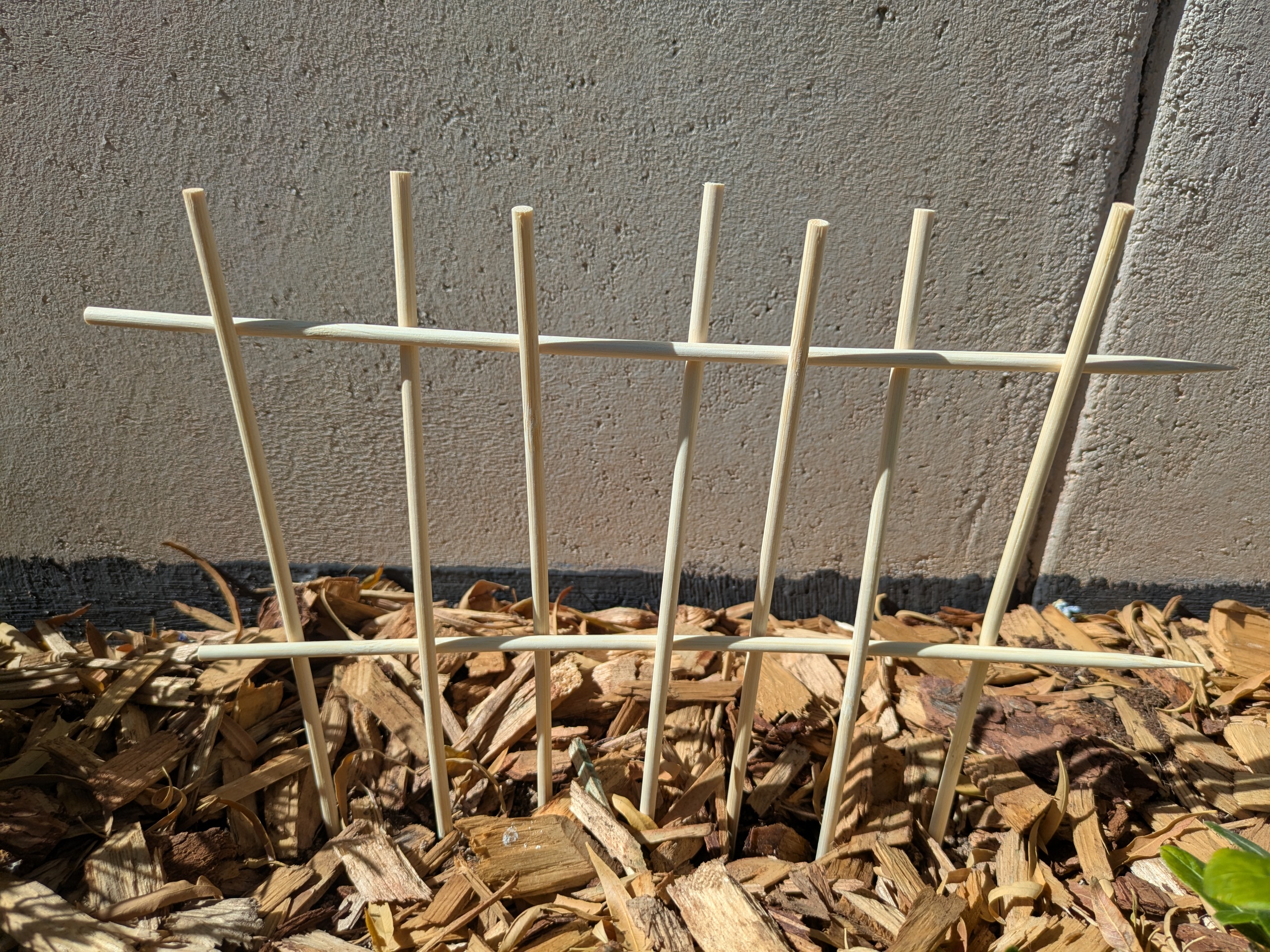
How to Make the Most of Live Supports
To use a live support successfully, plant your support crop first — ideally 2 to 3 weeks before the climber. For example, sow corn or sunflowers early so they’ve established strong stems by the time beans begin to climb. Choose upright, sturdy varieties (e.g., sunflowers with thick stalks or corn types known for their height). Be mindful of spacing: give each plant enough room to avoid overcrowding, especially since both will need sunlight and root space.
Gently guide young vines toward the support as they grow, using twine if needed. Avoid pulling or forcing stems; most climbers will naturally twine once they find a vertical surface.
Best Plants for Trellis Cuttings
Some plants stand out for their strength and flexibility:
- Willow – One of the best. Fast-growing, bendable, and easy to weave. Willow can even be planted live to root into the soil and form a living trellis — just be sure to keep it pruned to prevent overgrowth.
- Dogwood – Also very flexible and great for weaving structures like cages or lattices.
- Other tree branches – Many hardwood tree prunings are suitable, as long as they’re healthy and structurally sound.
Before using any cuttings, ask:
- Is it diseased or pest-damaged?
- Is it too brittle or prone to snapping?
- Do I want this to root, or stay inert? (Some cuttings might sprout if planted.)
When to Harvest and How Long They Last
Woody cuttings are best harvested in late winter or early spring, when many trees and shrubs are dormant. This is also when annual pruning takes place — a perfect time to save useful branches. Most untreated cuttings will last one growing season if exposed to the elements. For longer use, store them in a dry shed or garage over winter, and let them fully dry before stacking to avoid rot.
How to Prepare and Use Woody Cuttings
Once you’ve selected sturdy, healthy branches, it’s time to turn them into supports. First, trim off any small side branches and leaves. Cut the base of each stake at an angle — this makes it easier to push into the soil. If your soil is compacted or clay-heavy, pre-dig holes with a trowel or metal rod before placing your cuttings.
Woody stakes should be inserted deep enough to resist wind and the weight of the plant. At least 3-4 inches is good, although this depends on the height of the cutting and the type of plant it will support. For tall or heavy plants like indeterminate tomatoes, deeper anchoring or cross-bracing may be necessary.
Some woods, like willow or poplar, may start to root when pushed into moist soil. This can be a benefit if you want a living trellis, but a drawback if you’re using it in a confined space. If you don’t want the cutting to root, let it dry out before you use it, or strip the bark from the bottom portion.
Once your plants begin to grow, you can gently tease them to grow up your support. Garden twine, or jute, is excellent for this. I love using natural jute as it will compost into the soil once it’s no longer usable.
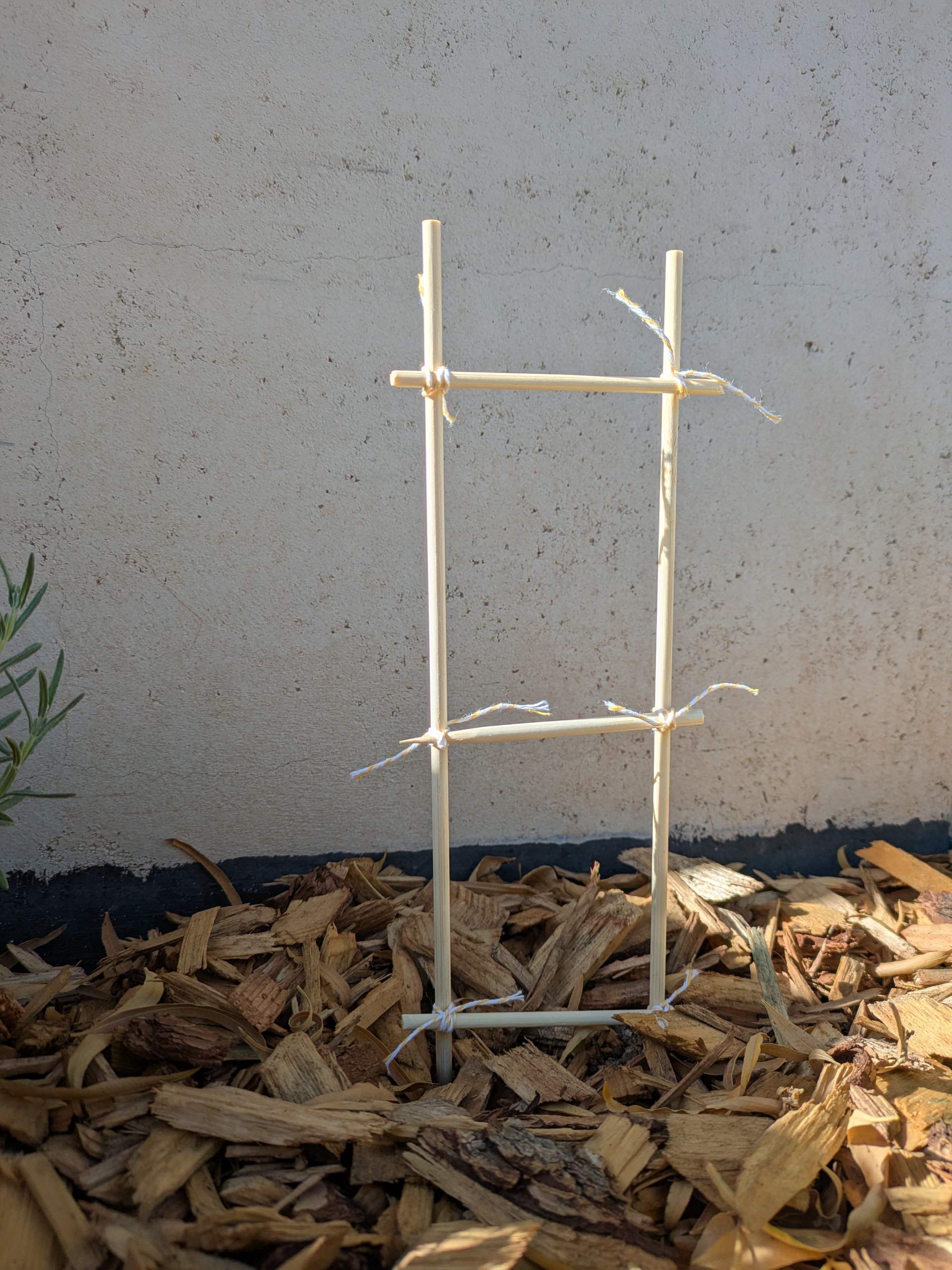
Simple Structures to Try
Using woody cuttings, you can build a surprising variety of structures with minimal tools. Here are a few beginner-friendly ideas:
Tent Frames: Tent supports are perfect for climbing beans, peas, or even flowering vines. Gather 3–6 similar-length branches and tie them together in a pyramid-like formation at the top with garden twine or jute. Fan the bases evenly and press them firmly into the soil. You can add horizontal cross braces too, if needed. Tents are especially helpful in small gardens or raised beds, as they create vertical growing space without crowding.
A-Frames and Ladders: Form two branches into a wide ‘A’ shape, or place them parallel, and connect them with horizontal rungs using smaller twigs and twine. This type of structure can be leaned over a bed or stood upright like a ladder. It works well for cucumbers or smaller squash varieties and can be adapted in size depending on your available cuttings.
Woven Panels: If you have flexible branches like willow or dogwood, try weaving them horizontally between upright stakes to create a rustic lattice. These panels can support sweet peas, nasturtiums, or even leafy crops like chard when positioned as a backdrop. You can also use woven panels to edge off a bed or provide shade for tender seedlings. Typically, you’ll need at least 5-7 upright poles for good rigidity, with as many crossmembers as you’d like. Trailing vine plants will appreciate larger gaps for example.
For these types of supports, plan the spacing of your cross-braces to suit what you’re growing. Tomatoes will need smaller ‘rungs’ while beans will need far fewer.
Single-Stake Supports: For tomatoes, peppers, or single-stem sunflowers, simple upright stakes work well. Just be sure the branch is thick and long enough to support mature growth — 3 to 4 feet above ground is a good target.
Cages: Take four sturdy sticks, at least 6 inches taller than your plants will grow, and stake them around your plant at a width suitable for its size. Using twine or willow, create rungs around the cage. To keep the rungs tight, loop around each stake and then twist or tie the loose end firmly.
These structures not only save money and reduce waste but also add a handmade, natural charm to the garden that fits right in with an organic or cottage-style aesthetic.
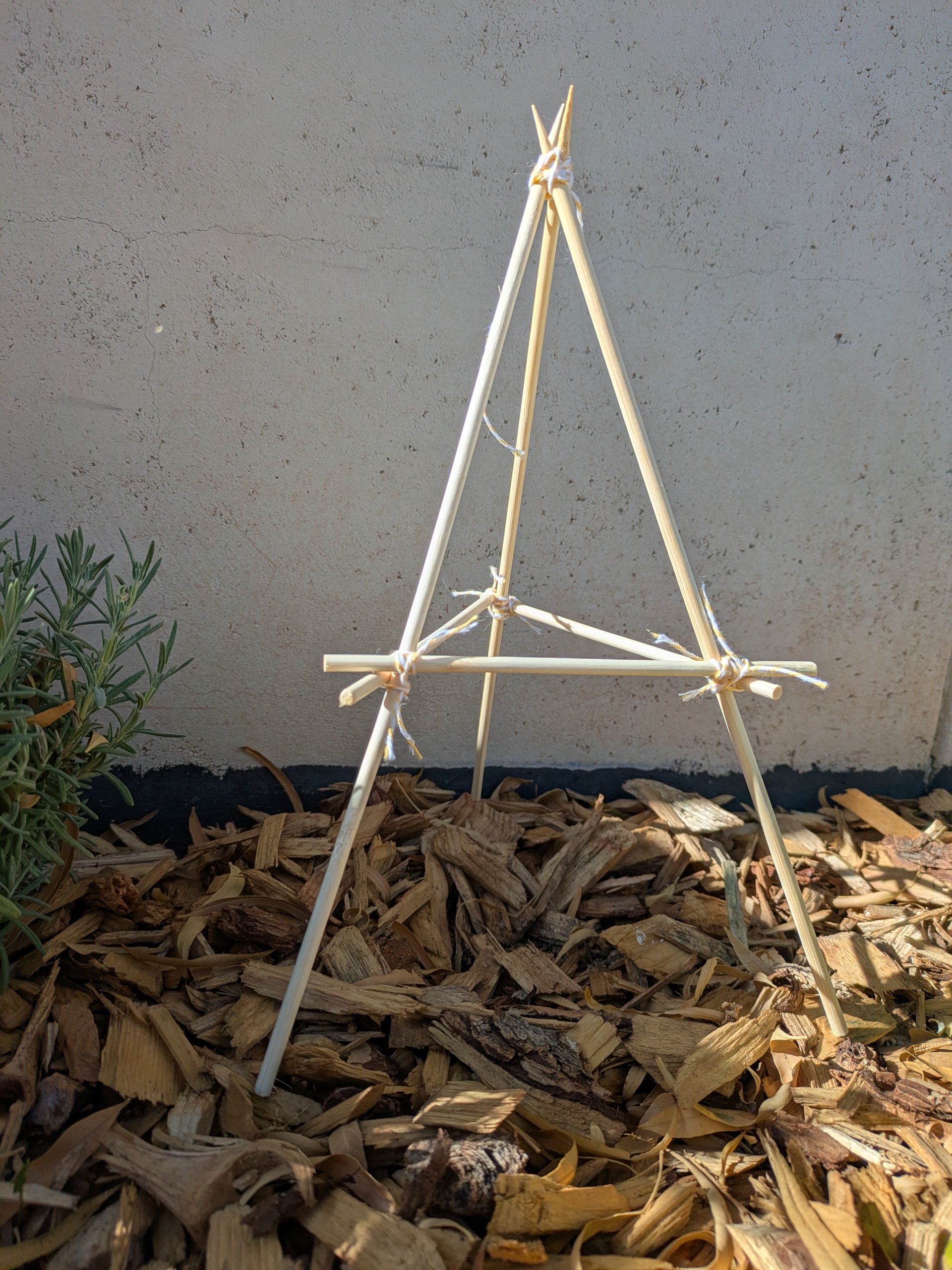
Caring for Your DIY Supports
Woody cuttings, like any garden structure, need occasional maintenance. Check them regularly throughout the season — especially after storms — to make sure they’re still stable, haven’t shifted in the soil, and haven’t started to break. Re-tie loose joints or replace any pieces that have started to rot or snap.
At the end of the season, you can compost smaller branches or store the sturdiest pieces for reuse next year. If you’re using live supports like sunflowers or corn, simply cut them back after harvest, and plan your planting calendar for the following season with new pairings in mind.
What I love most about making my own trellises is the imperfectness of it all. It’s also really fun and helps reduce waste and plastic in the garden.
I hope you have fun making your own as well.
